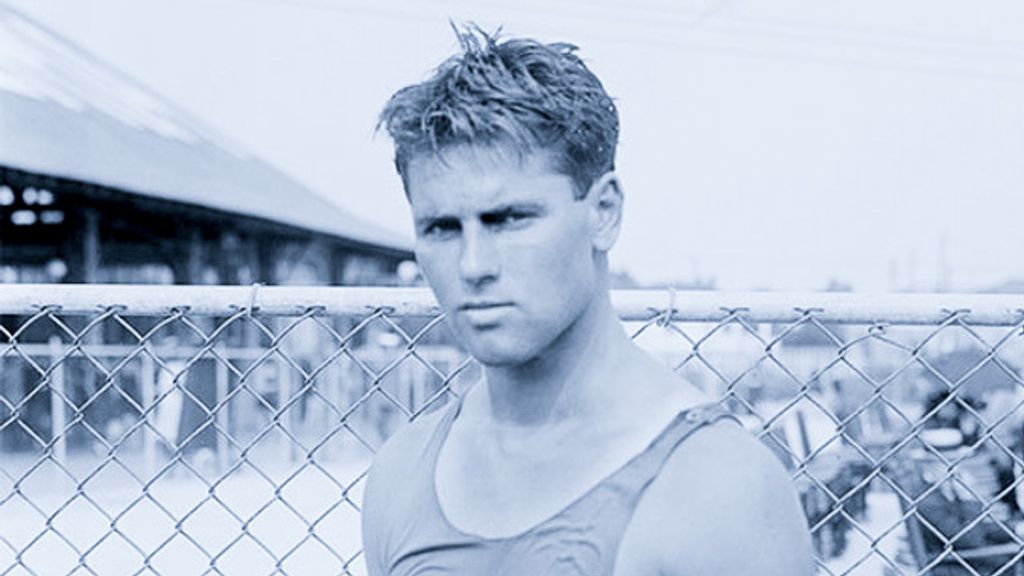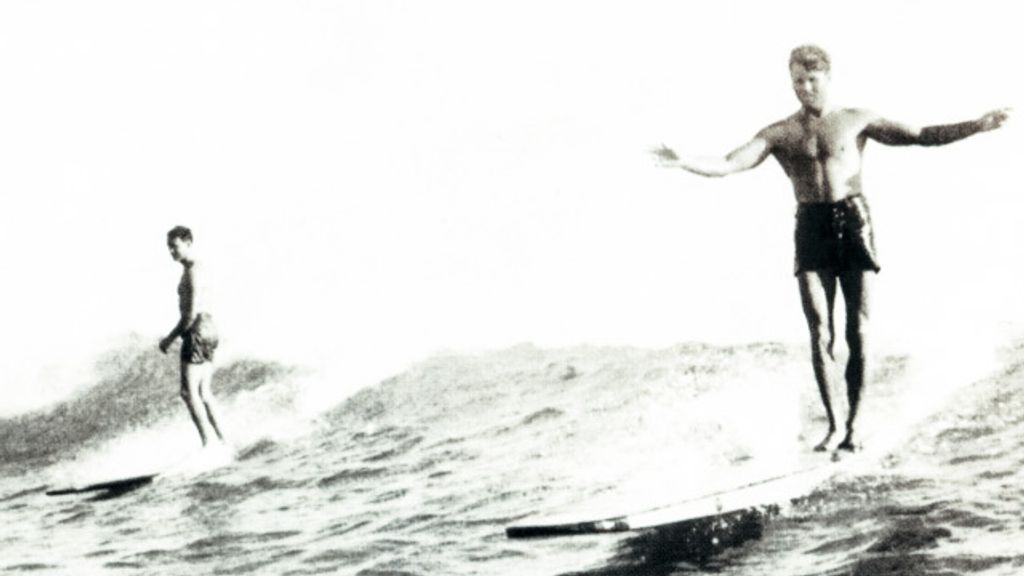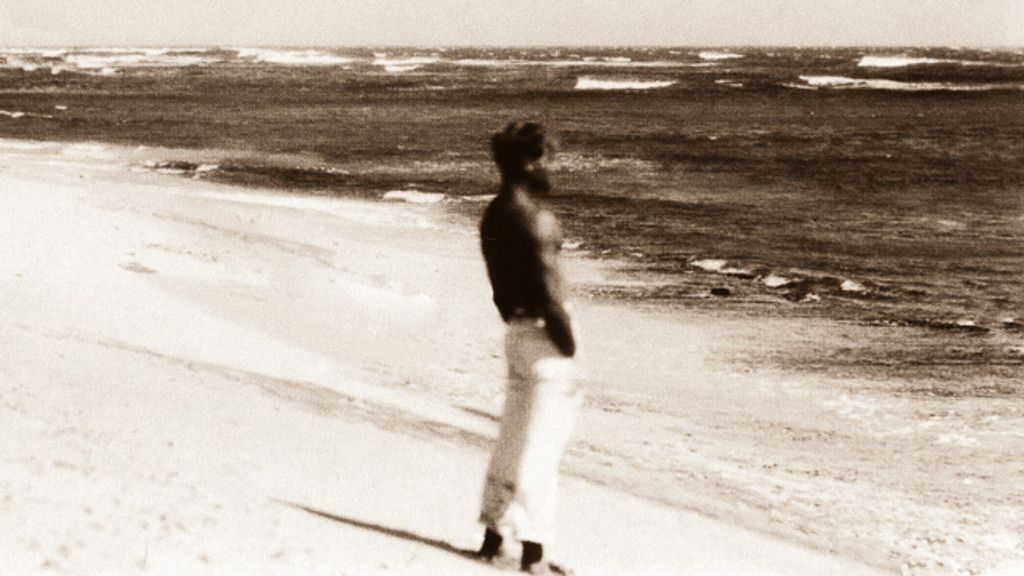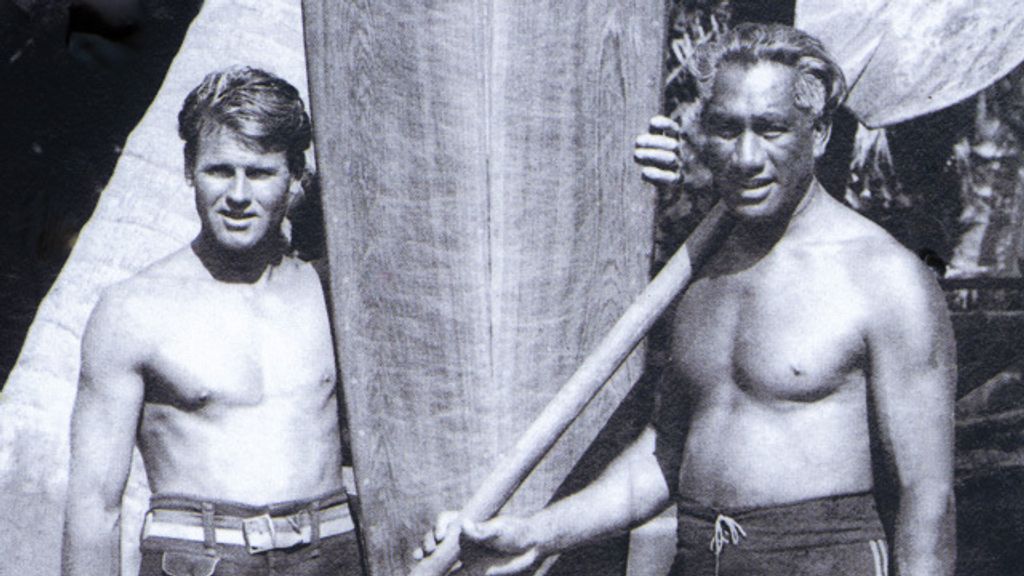SUNDAY JOINT, 10-29-2023: THE UNKNOWABLE TOM BLAKE

Hey All,
Occasionally I will pass my keyboard-calloused hands across the near and far fields of surf history, eyes closed, senses open, from Mamala the Shark Woman to the Swell of ’39 to T-Street, checking the sport’s auras and chakras and whatnot. All part of the job. And without fail, while performing this survey, things go dark when I pause and hover over Tom Blake.
I marvel at Blake’s range and drive and ambition. I crane my neck to take in his monumental Jenga-block tower of contributions to surfing, from board design to photography to fashion sense; his active and conversant interest in the sport’s past; his logical DIY approach to its future. But there is a heaviness about Blake, a melancholy, a distance between himself and the world—between himself and himself, maybe—that vines its way through the entirety of Blake’s life. You get a hint of this in the photos. The camera loved Blake and vice versa, and I spent an hour or so yesterday morning looking at shots of Blake. He was heroically handsome, Gary Cooper handsome. And like Cooper, Blake maintained a deep reserve even while choosing to make himself a public figure. I’ve seen maybe two shots where Blake is smiling in an easy, non-posed manner, and a couple more where he’s contentedly going about his work, measuring a board or threading a fishing net. In not a single photo, however, or at least not one that I’ve come across, does Blake look joyous, lit up, alive in the moment—the kinds of shot that Dale Velzy or Mike Doyle or Taj Burrow produced almost every time a camera swung their way. Blake, even in a group photo, had a knack for looking isolated.




Blake is often described as the first modern surfer, and I wouldn’t disagree. But if that’s true, we should probably be more interested in the degree to which Blake was emotionally damaged, and the degree to which his surfing became his guardrail, his therapeutic practice, his belief system. We all say we “need” to surf. But some need to more than others, and Blake, I believe, needed to ride waves more than anybody.
Too much armchair analysis? Does the limb I’ve climbed out on bend beneath my weight? Maybe so. But stay with me a moment.
Blake was born in Wisconsin in 1902. His mother died when Tom was 11 months old, and for 15 years he was punted around to various aunts and uncles. Decades later Blake told biographer Gary Lynch that he “fell from social grace” as a teenager, adding that “society . . . had so taken advantage of a well-meaning youth.” No further details were provided. The 1918 Spanish flu pandemic shut down Blake’s high school the year he was supposed to graduate, at which point he left Wisconsin and began a half-century of, as Lynch described it, “restlessness and almost constant movement.” Prior to landing in Los Angeles, in 1920, at age 19, Blake’s life had been cold and difficult and at times tragic.
Los Angeles was hard at first, too, as Blake knocked around amateur competitive swimming, took bit roles in Hollywood, and worked nickel-and-dime jobs. “You’re hungry, always hungry,” Blake later said of his early years in LA, “and always almost broke.” I will inch further yet onto that slender limb, shut my ears as it cracks behind me, and propose that taking up surfing in a big way in 1924, along with the lifeguard work that came with it, may have steered Blake clear from any number of bleak options that open up to a person who is unsettled, thwarted, lonely, up to and including a swan-diving exit off the Arroyo Seco Bridge.

I wish I knew more about Tom Blake. He and Duke are the first and second most influential pioneering figures, put them in whatever order you like, and to me there remains a great emptiness at the center of Blake’s story. If I were still writing books I would love to sign a deal right now, this week, to turn in a Blake biography in mid-2025. I would then disappear into a research vortex, finish the book in a heated rush, under the threat of lawsuit by my publisher, in 2027—and maybe then we’d all have a better understanding about this compelling dark star of a man.
What fascinates me as much as the idea of Blake—or rather, intrinsic to my fascination with Blake—is the notion that surfing, despite the fact that the people who do it are as small and mean and cruel as any control group, is so attractive and so essential to people like Blake. Surfing will provide refuge to those in need. And while it usually isn’t the goal, surfing will even, on occasion, open a path to eminence. You can count them by the dozen, starting with Simmons, Greenough, Dora, Morey, Peterson, Menczer, and Curren—Surfing Valhalla is filled with sublime misfits. Nothing about the sport should make us prouder.
Matt

[Photo grid, clockwise from top left: Tom Blake, 1981, photo by Jeff Divine; Blake decal, 1930s; Gary Cooper promo shot; state of Wisconsin; Blake paddleboarding, 1930; the seven chakras. Blake in Los Angeles, 1922. Blake surfing in Waikiki, 1930s. Blake on the beach at Black Point, Oahu, 1931. Blake, 1953. Blake and Duke Kahanamoku, 1936. Blake at Queen’s Surf, Waikiki, 1954]
[A slightly different version of this Joint originally ran in 2016 as an EOS blog post]